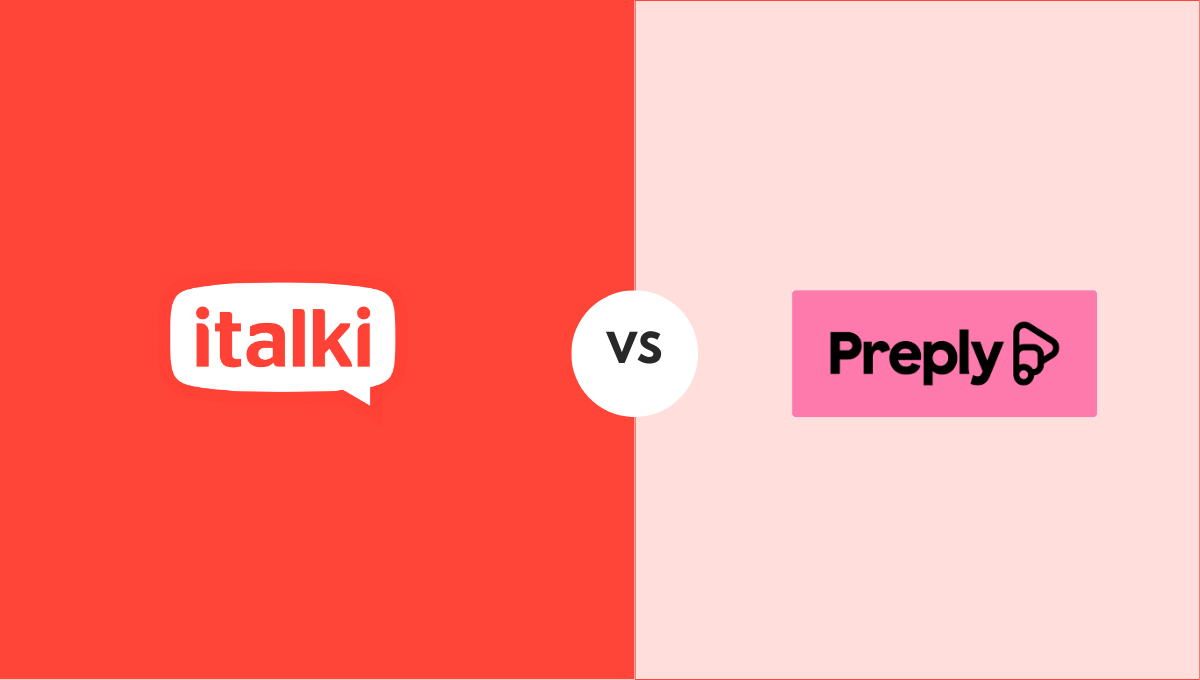I understand if you find the Chinese language funny, which makes you shy away from it. Remember that a good fraction of the world speaks Chinese, so it helps to know a few simple phrases and expressions, especially if you plan on visiting Asia someday. I bet you would also stand out as the only one amongst your peers who knows a few words in Chinese! How cool!
This article is a very detailed guide to help you learn how to say thank you in Chinese accurately, including how it’s pronounced and how to write in Chinese characters.
Get help learning Chinese
To learn more Chinese words and phrases, download the best language-learning app! italki is the best language learning tool where you can learn Chinese online from any part of the world.
- What is italki
italki is a platform where you can learn to say thank you, goodbye, I love you, and many other phrases in Chinese Mandarin or Cantonese. The website and app offer over a hundred professional and dedicated tutors for you to choose from. Courses in Chinese are very affordable, with different price points to suit your budget.
Once you get to the site through your browser or download the app from the play store or apple app store, you can gain access to any online Chinese tutor of your choice and book a lesson. If you are looking for a flexible study program, then italki would do the trick! Are you not sold yet? Try a free trial, and then you can make up your mind! xièxie!

Find Your Perfect Teacher
At italki, you can find your Chinese tutor from all qualified and experienced teachers. Now experience the excellent language learning journey!
Book a trial lesson
It’s about to get exciting! Let’s have some fun learning Chinese!
Gratitude is expressed differently in several cultures, but the most common way is to say “thank you simply.” Saying thank you does not only show that you appreciate an act, but it also shows that you are polite. Although what is considered polite in a particular setting may be considered rude in others, saying thank you is an excellent place to start.
There are several ways to say thank you in Chinese, and we’ll look at all of them! Let’s go!
How do you say thank you in Chinese
The first and most straightforward way to say thank you in Chinese is xièxie which means thank you or thanks.
If you want to express how grateful you are for something, you would say:
- Tai xèixei le, which means thank you very much thanks a lot or thank you so much.
If you are speaking to someone and want to emphasize what they have done in your response, you would add ” nĩ ” at the end of the person’s name. It means “you.” This is the most appropriate way to say thank you in Chinese mandarin. For example:
- Xèixei nĩ: Thank you.
When you say this, remember to put a smile on. Others might take it that you are not sincere or that you are being sarcastic. You might not be good at pronouncing words, but if you keep a smile on your face, your message will undoubtedly be conveyed.
Now you know two ways to say thank you in Chinese: you would need to know how to respond and what to say as a response because you may not know how to respond. Now here is a response:
if someone says Xèixei nĩ,
you respond by saying: bû yòng xèi
If you need to be more specific with which you are thanking the person, there are other ways to say thank you in Chinese. For example, thank you for the ride, you would say:
- Xièxiè nǐ de dāchē
- Thank you for the compliment
- Xièxiè nǐ de kuājiǎng
- Thank you for the invitation
- Xièxiè nǐ de yāoqǐng
- Thank you for the food
- Xièxiè nǐ de shíwù
These statements emphasize what the person helped them out with. If a friend who is very hungry visits you and you offer them food, they would say :
- Xièxiè nǐ de shíwù
Usually, they emphasize that they are starving and appreciate the food.
- I am grateful: maybe you like being extraordinary.
Saying I am grateful would replace ” thank you.” Saying I am grateful adds a little flavor to your vocabulary. In Chinese, the response “I am grateful” would be:
- Wǒ hěn gǎnjī ( I am grateful )
Chinese people don’t usually say Xèixei to their families because it feels like they are not close. To them, it feels like there is a distance between them.
How to say thank you in Chinese Cantonese
Thank you in Chinese Cantonese looks a little different from the Mandarin translation of the expression. If you’re visiting Hong Kong, where Cantonese is used, you hear the native speakers use either of these words:
- Do Ze (多謝) – thank you
- M goi (唔該)
- Nei Zan Hai Hou Jan (你真係好人) – thanks very kind of you
- Do Ze Nei Ge Gu Lai (多謝你嘅鼓勵) – thank you for your kind words
How do you pronounce thank you in Chinese?
Now that we know the Chinese word for thank you let’s learn thank you in Chinese pronunciation! Thanks in Chinese is xèixei which can be pronounced as syeh-syeh. It looks like the same word is repeated twice, but there is a slight difference between them.
We foresee you making many trips to China! On one of such trips, you will have to communicate with the locals or make a Chinese friend. Please learn more about the language, so you are not caught off guard.
Chinese Characters: how to write “thank you” in Chinese characters
Just like the English language has letters of the alphabet, in China, they have characters and not letters. They are called characters because they look like drawings. A couple of strokes come together to form what is known as a character.
The characters used in Chinese writing are known as logograms. These characters form their writing system, which is known as kanji. Unlike letters used widely, these characters or logograms are used chiefly by Japanese and Chinese people.
There are so many Chinese characters. There are over fifty thousand Chinese characters. A graduate of a Chinese school would know approximately four thousand characters. Most educated Chinese people know over eight thousand of these characters. These characters are taught in Japanese and Chinese schools, and one would need two thousand to three thousand characters to be able to read a newspaper.
You may be wondering what Chinese characters look like. Well, let me show you:
- 我很感激 – I am grateful (Xièxiè nǐ de shíwù)
- 谢谢你的食物 – thank you for the food (Xièxiè nǐ de shíwù)
- 谢谢你的邀请 – thank you for the invitation (Xièxiè nǐ de yāoqǐng)
The above are Chinese characters. Yes, they don’t exactly look like letters, not a little bit, but the Chinese have mastered them to know which character represents which word sound.
Common Chinese characters are taught at the basic levels of school, which are elementary, preschool, primary, and even older adults who are uneducated. In over 50,000 characters, some characters are most commonly used. They are:
> 的
Pronunciation in Chinese – ( de )
This word is a possessive particle.
Of / really and truly / aim, clear
> 一
Pronunciation ( yī / yì /yí )
It is a noun. It would mean – one / single / a
> 是
It is pronounced as – ( shì )
It means – is, are, am, yes to be
> 人
Pronounced as ( rén )
It means – man, person, people
> 上
Pronounced as ( shàng )
It means – above, on, over, top, (go) up, last, previous
> 们
It means – men
Those are the very few commonly used Chinese characters. Aside from these characters, you could learn Chinese numbers and Chinese jokes. There’s a better way to do everything. You can learn Chinese online with italki and perfect your speaking skills quickly!
Want to learn a language at italki?
Here are the best resources for you!
Conclusion
As the world evolves, you never know which of the languages might be of great assistance to you. It may be as simple as learning to say thank you in Chinese mandarin or saying thanks in Cantonese! Choose one of the many ways to show gratitude in Chinese and thrill your friends.
Chinese is such an intriguing language! If you want to speak Chinese like Jackie Chan in no time, book lessons on italki today!

















